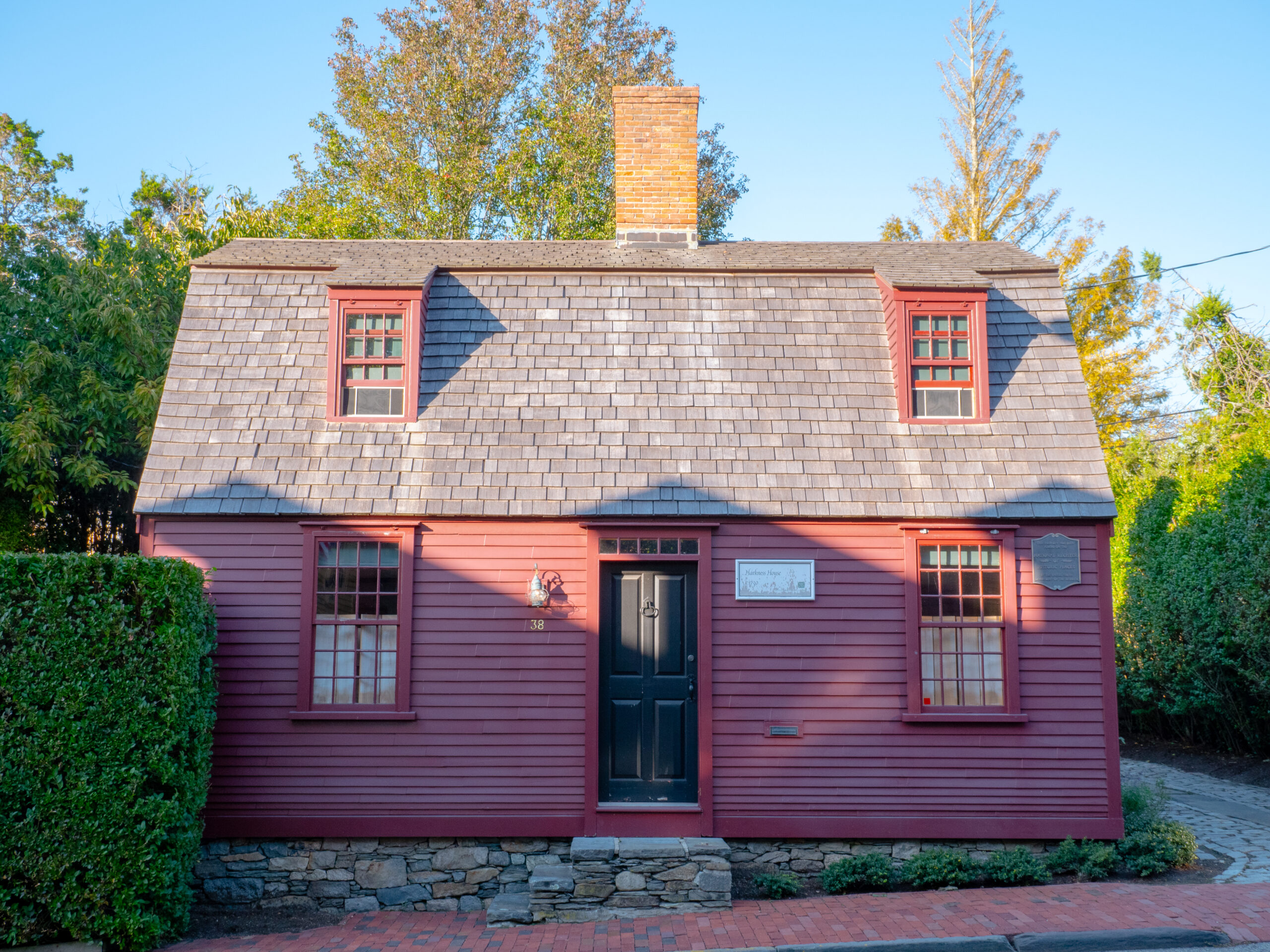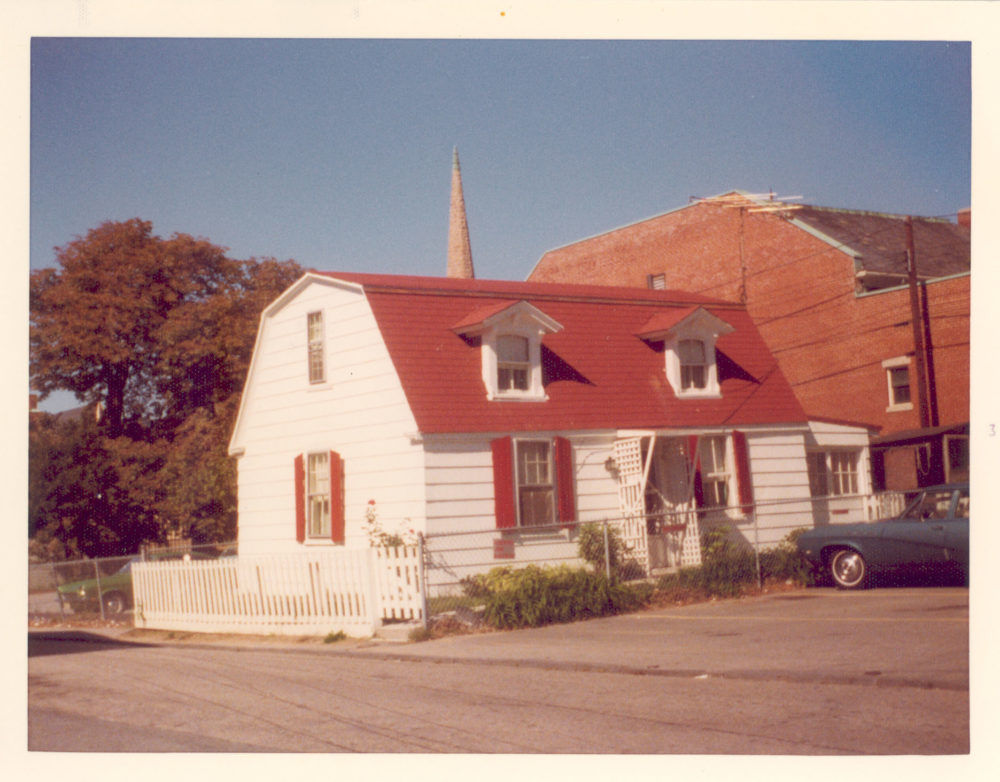Architectural story:
38 Green Street is a gambrel-roofed, one-and-one half story house with a central chimney and is an example of a Newport vernacular cottage that was very popular in the 18th and early-19th centuries.
As was common in the 18th and 19th centuries, the house was moved from its original site. In the late-18th century from Thames Street near Pelham Street to what is now Old Beach Road on the east side of Bellevue Avenue. It later moved to the top of Prospect Hill Street (at 159).
Restoration story:
This is a more recent example of a NRF restoration project, and as a result, the restoration process differed from restoration projects of the late-1960s and early-1970s.
NRF disassembled and moved the house from Prospect Hill Street to the current site on Green Street because an expansion of a parking lot threatened the house with demolition. As is often the case with houses that were moved, the house lost its chimney early on. The replacement chimney and fireplaces built during restoration were based on framing and trace lines for the hearths that were visible on the floors.
38 Green Street is the site of NRF’s Energy Efficiency Project, and will help inform adaptations and solutions to help make our historic homes more efficient and livable.
People story:
Throughout the late-19th and 20th centuries, the house was home to a telephone operator, tailors, a saloon, a steamfitter, and homemakers. There is more to uncover about the people who lived and worked in what is now 38 Green Street.



